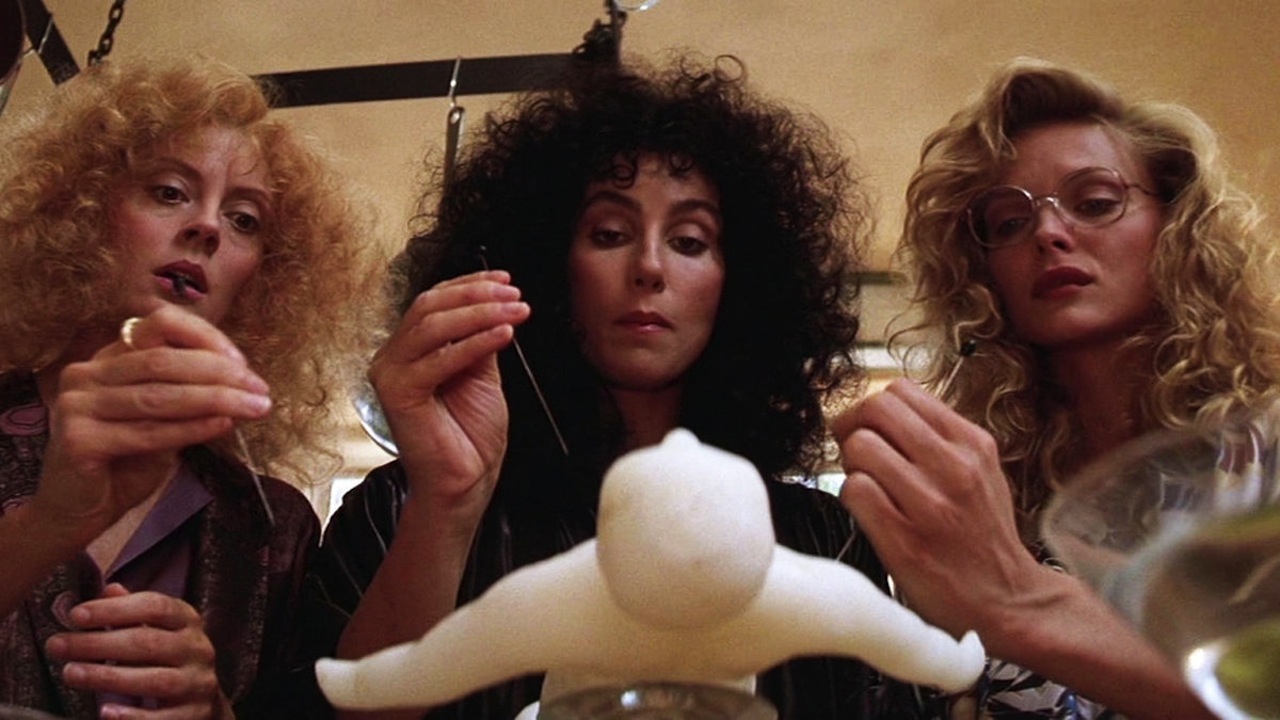LMST 345 _Topic: Witches and Archetypes_The Witches of Eastwick by Alfred A. Knopf
LMST 345
Topic: Witches & Archetypes
Read: The Witches of Eastwick

Set in the fictional town of Eastwick, Rhode Island, 1984 novel The Witches of Eastwick, by author John Updike follows the journey of three “modern” day witches as they all “ experienced similar transformations in their marriages”, found a new source of empowerment through attaining full independence from all moral restraints. In the novel, Updike undermines the immanent horror behind the myth through playful and empowering portrayals of the main characters Alexandra, Jane, and Sukie who represent the feminist crone archetypes: the earth mother, the repressed intellectual and the wild child. Set during the 1960s-70s, these archetypes are inspired by trends of the time, when many radical Feminists were actually identifying with witches as a representation of female empowerment. As the wise woman with supernatural power, the “Witch” archetypal figure represents a challenge to traditional patriarchal narratives and a platform for an accessible and relatable figure for women.
Described as “a unique blend of Realism, Expressionism, satire and religious allegory,” The novel opens on a comical note with the three ”New Women” being intrigued by the rumor of “a homosexual coming up from Manhattan to invade them”. Updike reveals that Alexandra, the strongest of the three witches, to be “already dilating, diffusing herself to be invaded. A tall dark European, ousted from his ancient heraldic inheritance, traveling under a curse…” Obviously a satirical moment, the portrayal of the women is very reminiscent of the medieval depiction of “maenadic women”, an example being ‘Witches’ Sabbath.
Topic: Witches & Archetypes
Read: The Witches of Eastwick

Set in the fictional town of Eastwick, Rhode Island, 1984 novel The Witches of Eastwick, by author John Updike follows the journey of three “modern” day witches as they all “ experienced similar transformations in their marriages”, found a new source of empowerment through attaining full independence from all moral restraints. In the novel, Updike undermines the immanent horror behind the myth through playful and empowering portrayals of the main characters Alexandra, Jane, and Sukie who represent the feminist crone archetypes: the earth mother, the repressed intellectual and the wild child. Set during the 1960s-70s, these archetypes are inspired by trends of the time, when many radical Feminists were actually identifying with witches as a representation of female empowerment. As the wise woman with supernatural power, the “Witch” archetypal figure represents a challenge to traditional patriarchal narratives and a platform for an accessible and relatable figure for women.
Described as “a unique blend of Realism, Expressionism, satire and religious allegory,” The novel opens on a comical note with the three ”New Women” being intrigued by the rumor of “a homosexual coming up from Manhattan to invade them”. Updike reveals that Alexandra, the strongest of the three witches, to be “already dilating, diffusing herself to be invaded. A tall dark European, ousted from his ancient heraldic inheritance, traveling under a curse…” Obviously a satirical moment, the portrayal of the women is very reminiscent of the medieval depiction of “maenadic women”, an example being ‘Witches’ Sabbath.
Comments
Post a Comment